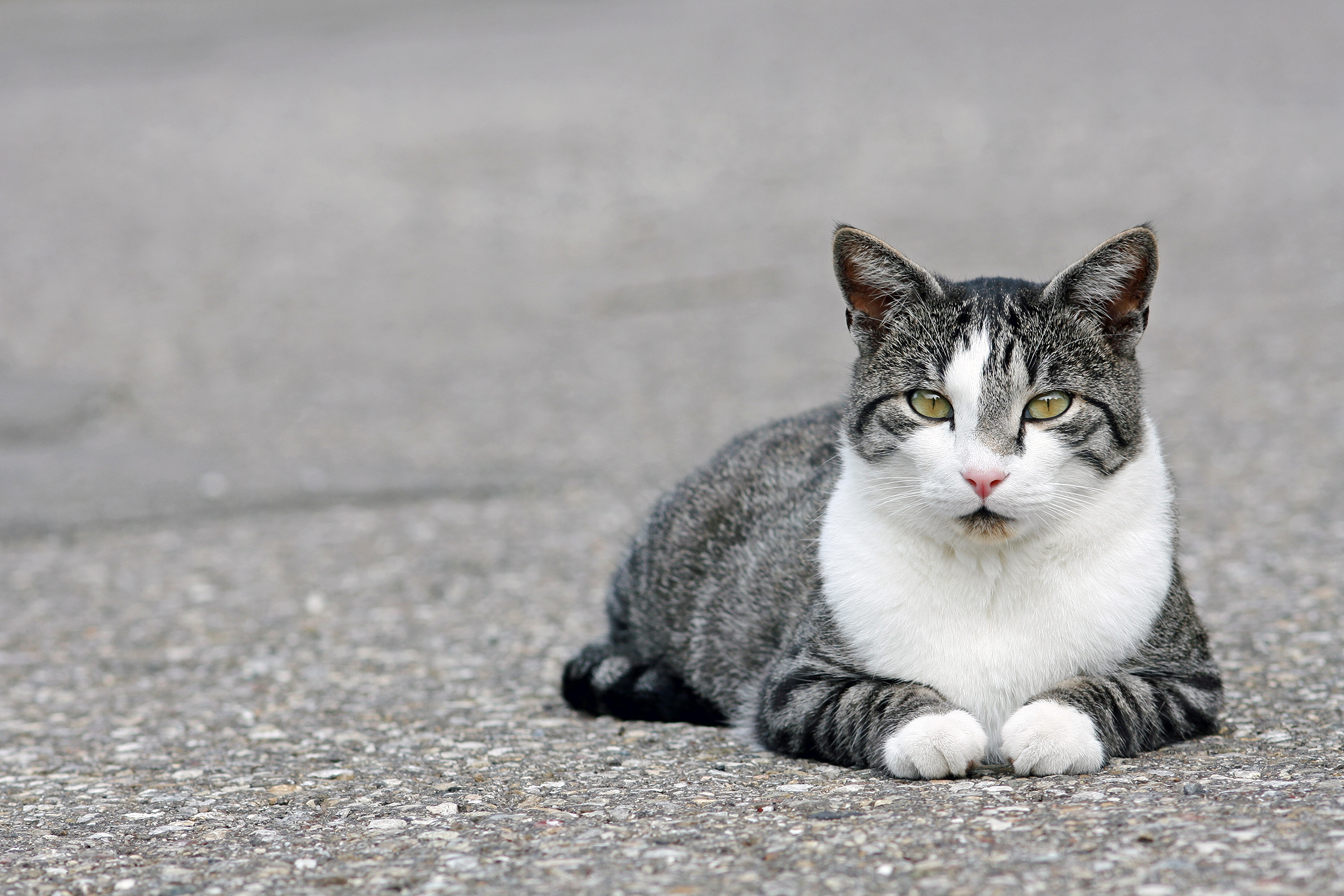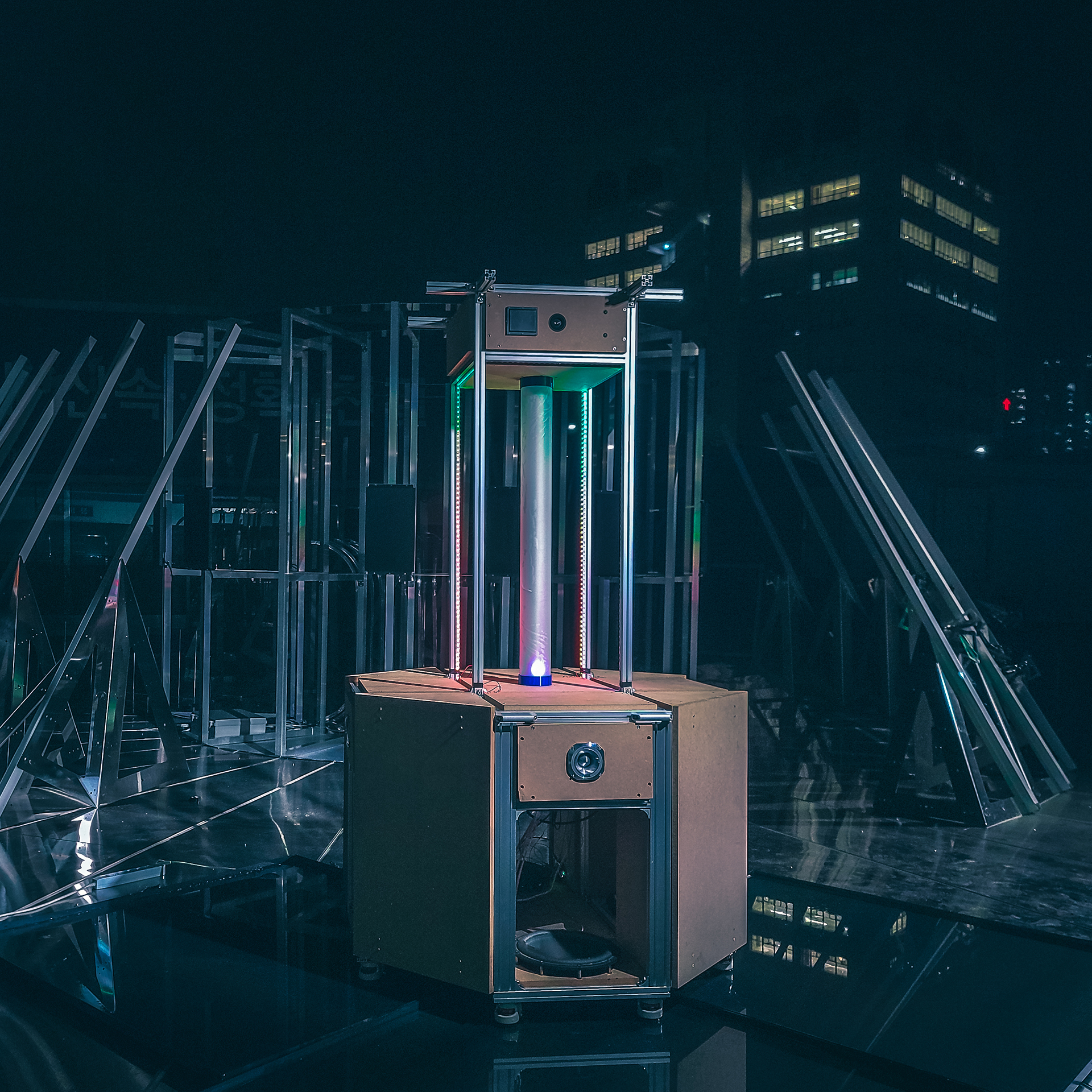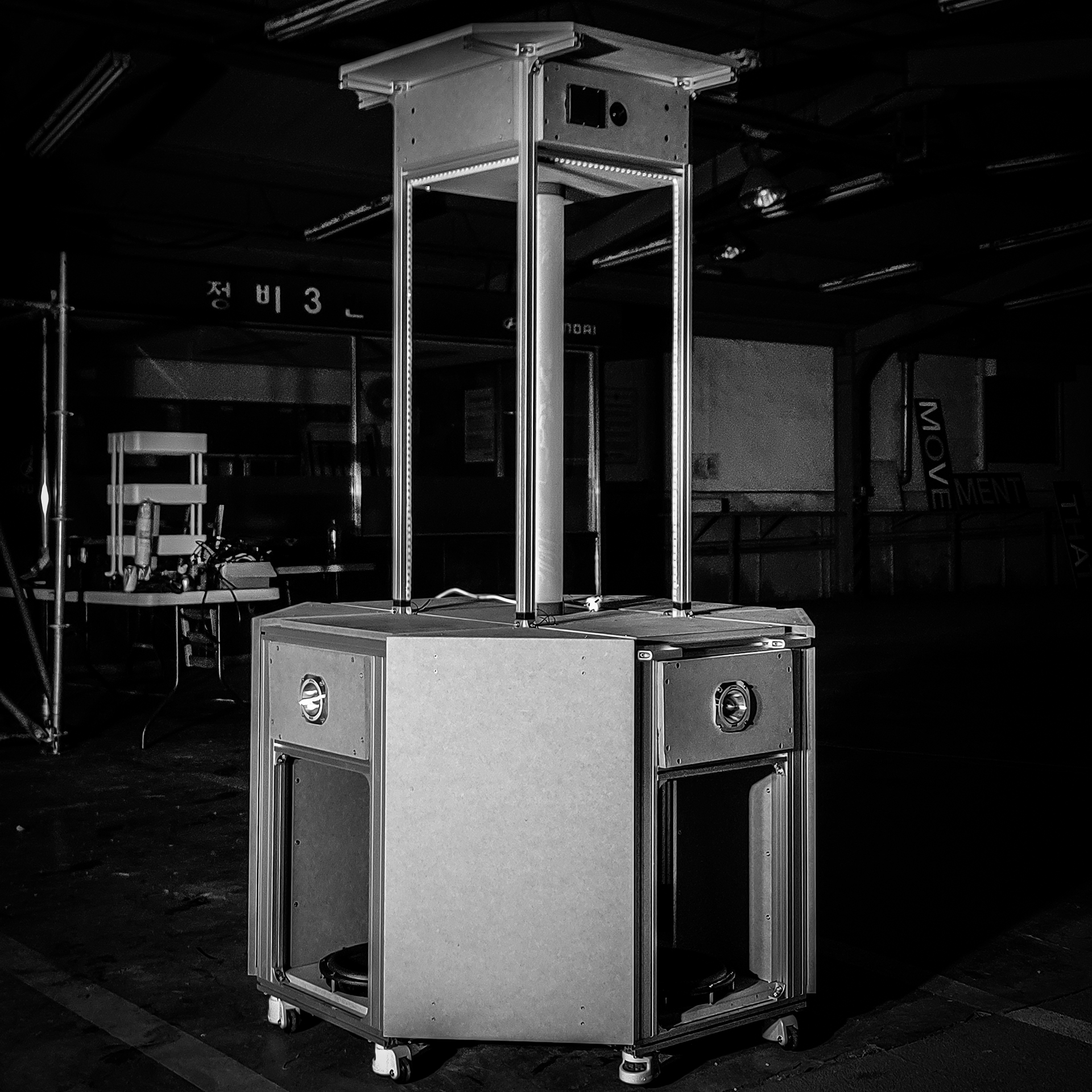The experience of becoming the weak on the road. “Look at the cars on the road through the eyes of a cat.”
We suggest the need to improve awareness of the driver and mobility industry for ‘animals’.
You must have imagined this while driving on a dark highway. ‘If an unknown creature suddenly jumps into the middle of the road and looks at me, should I have to step on the brake pedal urgently or turn the steering wheel to avoid the collision? If there is no other way to avoid the collision, is it possible for me to easily forget the frightened creature’s pupils that flashed in my headlights?’
One cold winter’s night with snow ‘Wouldn’t it be nice in case a kitten seeking warmth near the engine of a car fell asleep on the hood, and if there is a feature that alerts the fact to me for the moment, I start the car?’
Some might say that it can be simply solved if there were no animals on the city’s roads, but life becomes richer and more enjoyable when we can greet and occasionally become friends with creatures other than people. Although there are many issues related to the coexisting of numerous creatures with humans in cities, the automotive industry has generally not shown any interest. It has been that way so for a long time and probably will always be. That is why I saw the project of ‘Professor Min and the team of Kim & Chang (hereinafter referred to as Prof. Min’s team)’ as a new question posed to the overall concept of mobility.
We had an interview with Prof. Min’s team and tried to find out the original plans, and changes of their thoughts in developing projects. Throughout the interview, it was impressive that Junyoung Kim expressed the relationships with animals in a horizontal way using the word ‘the friends’ rather than saying ‘animals’. The word was quite touching to me, especially because I am very interested in animal rights. There was no benevolent attitude that this was for animals. It was interesting to learn about Yoon-kyung Min’s trajectory of the thoughts from various angles dedicated to how the mobility industry should start with the ‘animal friends’ who have become the week of the road.
Since the V2A project is to propose a single epistemology, I thought it would be difficult to fully present it. We wanted to hear how we can take care of ‘the friends’ by examining the ‘flow of thought’ they have passed through and pointing out the facts we have not noticed.
take #1/ The beginning of thought
I was walking on Daehak-ro and I saw a cat being killed the road right in front of me. Shockingly, I saw the driver moving the car back and forth on the lying cat, saying that he was going to make sure if the cat was dead or not.
It can be observed from two aspects. One is the cat’s death, and the other is the driver’s attitude towards the death. Many people pay more attention to scratches on the surface of the car than the death of the uninsured area that is derived from the car.
We wanted to launch a project that could talk about both aspects.
In the aspect of the automotive area, we wanted to prove how to prevent the death of cats technically, and to draw attention from people to the topic of animal deaths caused by automobiles.
Cars are created for people to commute more conveniently. Then, why do animals have to die on the roads where their habitats are taken away? I wonder why people do not care about this. So, I started to think about something that can stop this.
I found out the reason why animals do not avoid cars and stood still on the roads and in many cases, it was because they were surprised, or they were curious about what it was. I thought what if we could make the animals aware that cars are dangerous for themselves?
During the project, technical advisors said that it would be better to express this idea through the installation work rather than auto-driving programming as an easier and faster way to implement this idea as an exhibition work. So, I was able to produce a work for the exhibition in the same format as it is now.
take #2/ Applying Thoughts
I thought about this too. There is a frequency band that animal friends are afraid of and feel dangerous, and if people can export it as output from their cars, they might feel afraid of the cars and try to avoid them.
This technology is already being used on farms. It is used to keep away sparrows, rabbits and deer that damage crops.
Among the animals, the elk is the most killed animal on the roads and the next is cats.
Since the elk and deer are part of the same family, I started with the thought that if the same level of sound can be exported as output from the car, it would be possible to save the elk. We have yet to find any solid research results related to the frequency bands that drive out cats. In the case of cats, there were little research data because they were not directly related to damaging crops. I have been thinking about this. Cats are afraid of tigers, so if we cut out all humanly audible sounds from the tiger’s ‘roar sound’ and play only the audible range for the cat, maybe they can perceive the car is dangerous. It would not be difficult to export this sound as output from the car.
take#3/ The core of Thoughts
On the road, animals are completely in the position of the weak. I think it is very difficult for people in the strong position to understand the position of the weak. I thought about how to understand the feelings of the weak without harming the strong.
In the exhibition, we wanted to show that we cannot hear but the sound is in output and try to become and recognize ourselves as animals. I approached it from the point of view that it would be nice to be able to experience ‘there is something’ rather than not even thinking about it at all.
Roadkill is dangerous! Be careful! I am not just trying to say this to people, but I hope people to think about roadkill at least once in life.
There are areas where animals often appear. The problem is that people make the main eco-corridors in such places, but the animals do not even know the corridors are for them.
When using the navigation, it often says that “it is an area where many animals appear.” But roadkills mostly occur in the early morning, at the same time when drivers of cargo transport trucks are pressed for time, so they do not think it is necessary to slow down and avoid animals. Since the drivers are forced to move a little faster and get their work done as soon as possible, I think they care less about roadkills.
take #4/ Expansion of thoughts
First of all, it is a matter of how the car will recognize the animal. Self-driving cars already have multiple cameras attached to them. There are three cameras just recognizing the front, and as an example, the cameras in Tesla cars measure up to 250m in distance. 200~250m, 80~100m, 40~30m. The total of three cameras measures from far to near distances. Even existing self-driving cars have cameras inside. We thought that it would be possible if we add our technology, ‘animal recognition data’. The premise of the project is that the camera recognizes the animal and exports a sound as output so that the animal can avoid the car on its own.
It will depend on whether animals appear at night or during the day, how big they are, and how much the camera can film. The interesting fact is that electric cars are very popular this day, but they have no sound. It is known that the sound is forced to play through the speaker for the safety of pedestrians. If we put our technology into the speaker, we imagine that it can be implemented without any special equipment. I think it is very similar to the directions of self-driving cars.
take #5/ The Experiment of Thoughts
First of all, I just wanted to attach a speaker to the car. I opened up the hood of my car, put the speakers in, and tried to see if this worked or not. It actually worked! So, I just started it and I wondered,
‘When the car makes a noise, in which direction should I make the animals run away? Let’s say that the animal came in from the 1st lane and ran away to the 2nd lane scared from the noise. What if the accident occurs in the 2nd lane?’ So, I installed the speakers separately on the right and left.
Even in the case of the klaxon, the sound is different from the right and left sides. The klaxon indicates the low hertz on the left and the high hertz on the right. By attaching different speakers to the right and left just like the klaxon, we have changed the concept when an animal comes in from the left, play the speaker on the right to let the animal go back.
According to the officials at the Hyundai Motor Company, in case the self-driving car should avoid the collision with the animal, it may collide with another car and cause an accident at the moment the driver turns the steering wheel instantly, and it is really difficult to collect data about the moment of turning the steering wheel for processing.
Recently, the Volvo car recognized that there was a person in front and avoided the person. The driver did not see anyone, but the car recognized the presence, so it could avoid the person. At that time, the car was crossing over the next lane. If the car was not able to recognize another car in the next lane at that time, it might have led to an accident. Fortunately, we think applying the simple algorithm to the self-driving car might work since we are trying to make the animals realize the dangerous situation and run away.
Giving data to the car through the fixed camera is really easy, but it might not work everywhere. First of all, I have attached anything that can recognize objects. Anything that is expensive such as the camera, radar, and thermal camera. In the end I took it all off. At night, it is more important to recognize objects in front of the car. I was wondering what device would have a better function of recognition at night, and there was the IR camera. It is the camera that measures the distance between targets. In Germany, it is legal to see what is in front of the driver at night because all cars have IR cameras, but in Korea, it is still illegal. I thought it would be possible if we could put this on the car in the future.
At the beginning of this project, we wanted to apply this technology to the self-driving system of the car. However, we changed our mind towards the installation with the question of how to show it in the form of an exhibition.
Since we cannot exhibit the moving car, we decided to work on the installation infrastructure because it would be easier to create works when the camera is in a fixed state. Once we decided to work on the infrastructure, we wanted to figure out the possibilities by attaching the camera to the infrastructure, so we converted the photos into data and then ran all of them. At night, this is how the driver can recognize the objects. However, because we cannot bring the elk or cats to the exhibition hall, it is impossible to show them to the audience. We cannot say like, ‘This is a cat.’ Then, what should we do? We came up with the idea of targeting to people first. I ran the data on humans in the same way as cats and elk, and the recognition probability resulted quite high. After collecting data in this way, I wanted to apply it to the car, but somehow it turned into the huge installation work.
take #6/ The Exhibition of Thoughts
Looking at the exhibition work, people often say that it is ‘large’ because it is over 2 meters tall. (laugh)
They react like, ‘Wow, this really works.’ Recognition is a very common technology.
Using speakers is also a common technology. However, no one has tried convergence like us but we kind of integrated it all. The cameras are installed facing east, west, south, and north, showing the location of animals nearby at the car interface. It alerts that there is an animal in the southeast and warns the driver to drive carefully.
What we set up as the exhibition forms are the cat and the human.
Considering the actual frequency of use, the ranking draws data about a person, and when a person is seen, the customized frequency is given to that person. It is different from what the cat can hear and what the deer can hear. By exporting output of different sounds, the animal friends can move more safely. The result of analysis by the camera is expressed by the vibration of the speaker and water. The stage of analyzing what kind of animal it is through the camera, and the sound of the speaker that exports output of a frequency suitable for the animal, appear as water vibrations in the same range. The RGB light is also used, and in the case of the RGB light, it is attached to the east, west, south, and north, and designed to emit light in the direction recognized by the animal.
take #7/ Dissemination of Thoughts
Among the team members, Seon-ho Jang likes to take pictures. We implemented things such as collecting a lot of data about the camera, how to take pictures, how to select the camera brand, and how to process the data.
Yoon-kyung Min collected data about how to test through animals and what range of sounds animals can hear. She helped a lot on how to export the data as output and also designing the exterior cover.
Jun-young Kim is the manager in charge of the entire project. I am in charge of writing since I am good at it at least. I was also in charge of the exterior frame design in the area of the wiring and the code that needed fusion between above and below.
Through the process of preparing for the exhibition, I came to think of the truth that making something without enough thoughts increases the cost. In terms of making something, it seems that there is no technology that cannot be implemented. But when I keep working on it, I often desire to put lots of features and technologies into the work. Through this project, we considered applying technologies that have already been implemented to achieve a clear goal with the least cost.
The aim of our project was simple.
“Cars can make animals run away. We can inform animals that cars are dangerous to them.”
However, we learned that there are many things that can easily be applied technically in the process but are difficult to even try because of the restrictions by laws and systems. We might not be able to solve the legal issues, but we hope that it would be nice to have a little more flexibility in the related laws about the evolving technology. On the other hand, the idea of driving out cats because cars are dangerous can be used not for the sake of cats, but for the purpose of kicking out cats because of hatred towards cats. We never want it to be misused as the kind of abuse. Please think about the relationship between the animal and the driver through V2A. I thought having the experience of substituting the position of ourselves into the position of animals or the weak would be valuable to everyone. #thank you.
*The content of this interview is the result of the improvised and discrete conversations, so it has been edited, supplemented, and organized.
Jae-eun Jeong (Film director)
She debuted in 2001 with the film <Take Care of my Cat>. While continuing her work on feature films such as <Take Care of my Cat>, <If You Were Me>, <The Aggressives>, and <Butterfly Sleep>, she became to be interested in non-fiction storytelling. So, she produced the architectural documentary trilogy <Talking Architect> and <Talking Architecture, City: Hall>. >, <Ecology in Concrete>, and <Cat’s Apartment>. She is also archiving creators of the urban environment and spaces, spatial experiences and memories, and the history of cities as multi-layers and presenting them in the form of films and exhibitions.
Prof. Min and Kim & Chang (System engineer, Digital artist)
Since 2018, Prof. Min and Kim & Chang have been working to create a ‘nice world to live in’ that can be implemented with the engineering knowledge and technology. They started this <V2A (Vehicle to Animals)> project, thinking that the self-driving also requires technology for animals.





